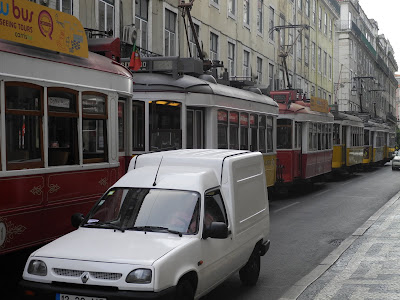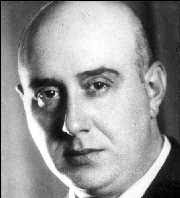 Across Europe, Irking Drivers Is Urban Policy
Across Europe, Irking Drivers Is Urban PolicyPedestrians and trams are given priority treatment in Zurich. Tram operators can turn traffic lights in their favor as they approach, forcing cars to halt.
ZURICH — While American cities are synchronizing green lights to improve traffic flow and offering apps to help drivers find parking, many European cities are doing the opposite: creating environments openly hostile to cars. The methods vary, but the mission is clear — to make car use expensive and just plain miserable enough to tilt drivers toward more environmentally friendly modes of transportation.
Cities including Vienna to Munich and Copenhagen have closed vast swaths of streets to car traffic. Barcelona and Paris have had car lanes eroded by popular bike-sharing programs. Drivers in London and Stockholm pay hefty congestion charges just for entering the heart of the city. And over the past two years, dozens of German cities have joined a national network of “environmental zones” where only cars with low carbon dioxide emissions may enter.
Likeminded cities welcome new shopping malls and apartment buildings but severely restrict the allowable number of parking spaces. On-street parking is vanishing. In recent years, even former car capitals like Munich have evolved into “walkers’ paradises,” said Lee Schipper, a senior research engineer at Stanford University who specializes in sustainable transportation.
“In the United States, there has been much more of a tendency to adapt cities to accommodate driving,” said Peder Jensen, head of the Energy and Transport Group at the European Environment Agency. “Here there has been more movement to make cities more livable for people, to get cities relatively free of cars.”
Likeminded cities welcome new shopping malls and apartment buildings but severely restrict the allowable number of parking spaces. On-street parking is vanishing. In recent years, even former car capitals like Munich have evolved into “walkers’ paradises,” said Lee Schipper, a senior research engineer at Stanford University who specializes in sustainable transportation.
“In the United States, there has been much more of a tendency to adapt cities to accommodate driving,” said Peder Jensen, head of the Energy and Transport Group at the European Environment Agency. “Here there has been more movement to make cities more livable for people, to get cities relatively free of cars.”
To that end, the municipal Traffic Planning Department here in Zurich has been working overtime in recent years to torment drivers. Closely spaced red lights have been added on roads into town, causing delays and angst for commuters. Pedestrian underpasses that once allowed traffic to flow freely across major intersections have been removed. Operators in the city’s ever expanding tram system can turn traffic lights in their favor as they approach, forcing cars to halt.
Around Löwenplatz, one of Zurich’s busiest squares, cars are now banned on many blocks. Where permitted, their speed is limited to a snail’s pace so that crosswalks and crossing signs can be removed entirely, giving people on foot the right to cross anywhere they like at any time.
As he stood watching a few cars inch through a mass of bicycles and pedestrians, the city’s chief traffic planner, Andy Fellmann, smiled. “Driving is a stop-and-go experience,” he said. “That’s what we like! Our goal is to reconquer public space for pedestrians, not to make it easy for drivers.”
As he stood watching a few cars inch through a mass of bicycles and pedestrians, the city’s chief traffic planner, Andy Fellmann, smiled. “Driving is a stop-and-go experience,” he said. “That’s what we like! Our goal is to reconquer public space for pedestrians, not to make it easy for drivers.”
While some American cities — notably San Francisco, which has “pedestrianized” parts of Market Street — have made similar efforts, they are still the exception in the United States, where it has been difficult to get people to imagine a life where cars are not entrenched, Dr. Schipper said.
Europe’s cities generally have stronger incentives to act. Built for the most part before the advent of cars, their narrow roads are poor at handling heavy traffic. Public transportation is generally better in Europe than in the United States, and gas often costs over $8 a gallon, contributing to driving costs that are two to three times greater per mile than in the United States, Dr. Schipper said.
What is more, European Union countries probably cannot meet a commitment under the Kyoto Protocol to reduce their carbon dioxide emissions unless they curb driving. The United States never ratified that pact.
Globally, emissions from transportation continue a relentless rise, with half of them coming from personal cars. Yet an important impulse behind Europe’s traffic reforms will be familiar to mayors in Los Angeles and Vienna alike: to make cities more inviting, with cleaner air and less traffic.
Michael Kodransky, global research manager at the Institute for Transportation and Development Policy in New York, which works with cities to reduce transport emissions, said that Europe was previously “on the same trajectory as the United States, with more people wanting to own more cars.” But in the past decade, there had been “a conscious shift in thinking, and firm policy,” he said. And it is having an effect.
After two decades of car ownership, Hans Von Matt, 52, who works in the insurance industry, sold his vehicle and now gets around Zurich by tram or bicycle, using a car-sharing service for trips out of the city. Carless households have increased from 40 to 45 percent in the last decade, and car owners use their vehicles less, city statistics show.
“There were big fights over whether to close this road or not — but now it is closed, and people got used to it,” he said, alighting from his bicycle on Limmatquai, a riverside pedestrian zone lined with cafes that used to be two lanes of gridlock. Each major road closing has to be approved in a referendum.
Today 91 percent of the delegates to the Swiss Parliament take the tram to work.
Still, there is grumbling. “There are all these zones where you can only drive 20 or 30 kilometers per hour [about 12 to 18 miles an hour], which is rather stressful,” Thomas Rickli, a consultant, said as he parked his Jaguar in a lot at the edge of town. “It’s useless.”
Urban planners generally agree that a rise in car commuting is not desirable for cities anywhere.
Mr. Fellmann calculated that a person using a car took up 115 cubic meters (roughly 4,000 cubic feet) of urban space in Zurich while a pedestrian took three. “So it’s not really fair to everyone else if you take the car,” he said.
Mr. Fellmann calculated that a person using a car took up 115 cubic meters (roughly 4,000 cubic feet) of urban space in Zurich while a pedestrian took three. “So it’s not really fair to everyone else if you take the car,” he said.
European cities also realized they could not meet increasingly strict World Health Organization guidelines for fine-particulate air pollution if cars continued to reign. Many American cities are likewise in “nonattainment” of their Clean Air Act requirements, but that fact “is just accepted here,” said Mr. Kodransky of the New York-based transportation institute.
It often takes extreme measures to get people out of their cars, and providing good public transportation is a crucial first step. One novel strategy in Europe is intentionally making it harder and more costly to park. “Parking is everywhere in the United States, but it’s disappearing from the urban space in Europe,” said Mr. Kodransky, whose recent report “Europe’s Parking U-Turn” surveys the shift.
Sihl City, a new Zurich mall, is three times the size of Brooklyn’s Atlantic Mall but has only half the number of parking spaces, and as a result, 70 percent of visitors get there by public transport, Mr. Kodransky said.
In Copenhagen, Mr. Jensen, at the European Environment Agency, said that his office building had more than 150 spaces for bicycles and only one for a car, to accommodate a disabled person.
While many building codes in Europe cap the number of parking spaces in new buildings to discourage car ownership, American codes conversely tend to stipulate a minimum number. New apartment complexes built along the light rail line in Denver devote their bottom eight floors to parking, making it “too easy” to get in the car rather than take advantage of rail transit, Mr. Kodransky said.
While many building codes in Europe cap the number of parking spaces in new buildings to discourage car ownership, American codes conversely tend to stipulate a minimum number. New apartment complexes built along the light rail line in Denver devote their bottom eight floors to parking, making it “too easy” to get in the car rather than take advantage of rail transit, Mr. Kodransky said.
While Mayor Michael R. Bloomberg has generated controversy in New York by “pedestrianizing” a few areas like Times Square, many European cities have already closed vast areas to car traffic. Store owners in Zurich had worried that the closings would mean a drop in business, but that fear has proved unfounded, Mr. Fellmann said, because pedestrian traffic increased 30 to 40 percent where cars were banned.
With politicians and most citizens still largely behind them, Zurich’s planners continue their traffic-taming quest, shortening the green-light periods and lengthening the red with the goal that pedestrians wait no more than 20 seconds to cross.
“We would never synchronize green lights for cars with our philosophy,” said Pio Marzolini, a city official. “When I’m in other cities, I feel like I’m always waiting to cross a street. I can’t get used to the idea that I am worth less than a car.”
in THE NEW YORK TIMES 26 June 2011
FOTO: Eléctricos "presos" na Rua dos Fanqueiros devido ao excesso (e excessos!) de estacionamento à superfície que ainda existe na Baixa, Lisboa. É todo um paradigma de mobilidade, de estilos de vida, que tem de ser profundamente altetado em Portugal.































































.jpg)







2 comentários:
Há duas formas;
1) Esperar eternamente uma mudança de paradigma da sociedade;
2) Serem as autoridades executivas e legislativas a impor e fazer cumprir um novo paradigma.
Já sei que os defensores da libertinagem vão me criticar, mas não vejo outro modo.
Vejam o exemplo da proibição de fumar nos locais de trabalho e outros espaços fechados. Se fossemos pela vontade da sociedade ainda estaríamos na estaca zero...
Hoje toda a sociedade faz um balanço positivo, até os próprios fumadores....
this is an article written for Sunday readers. it makes it look that when it comes to cars in the cities Europe is way different from America when in fact it is not. American cities do not need explicit congestion charges because they already have implicit ones: very expensive parking and an unforgiving police force always hovering around parked cars. try to park and not pay the meter in, say, Chicago, and you will see the hefty fine you get.
Enviar um comentário